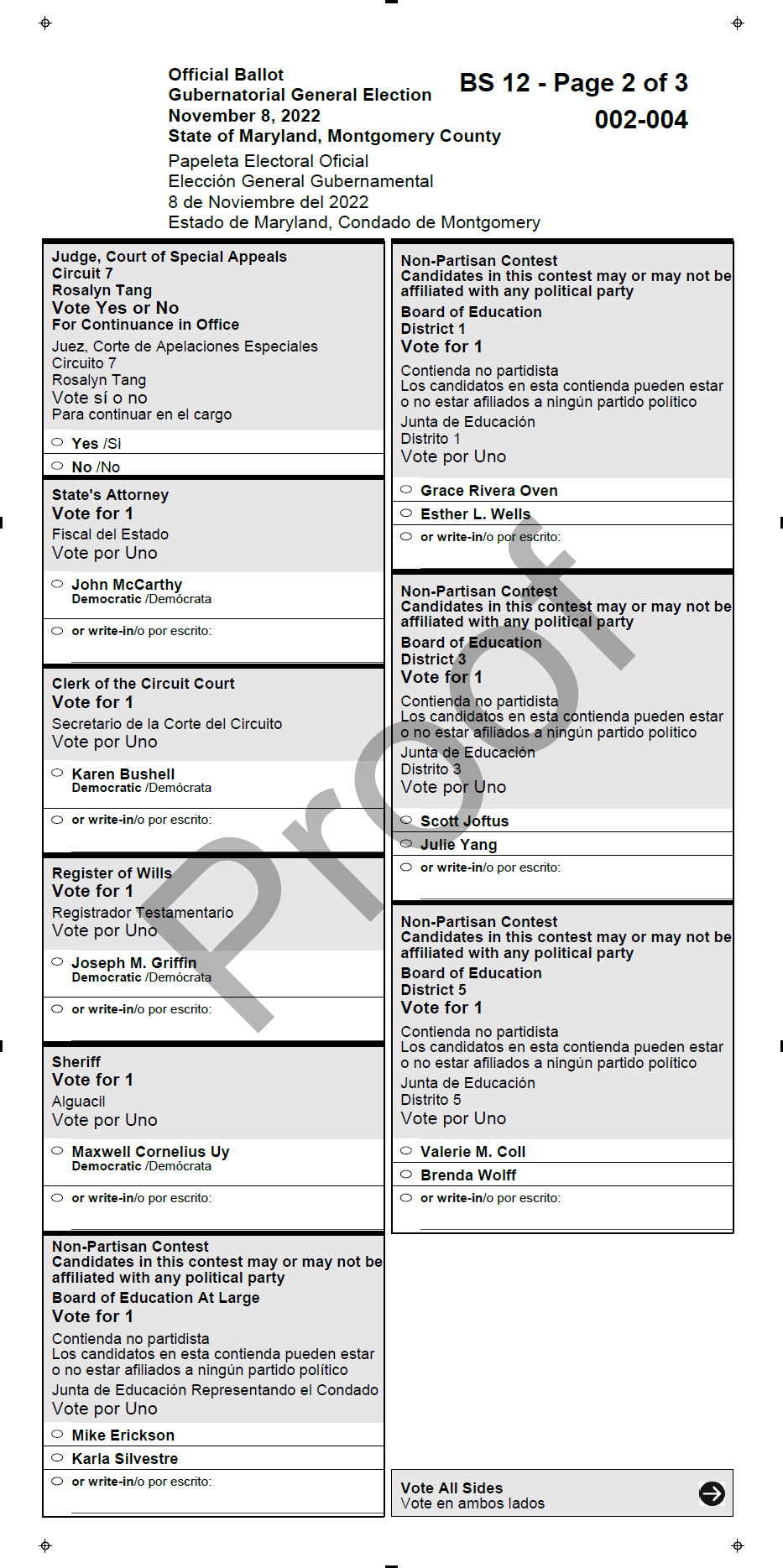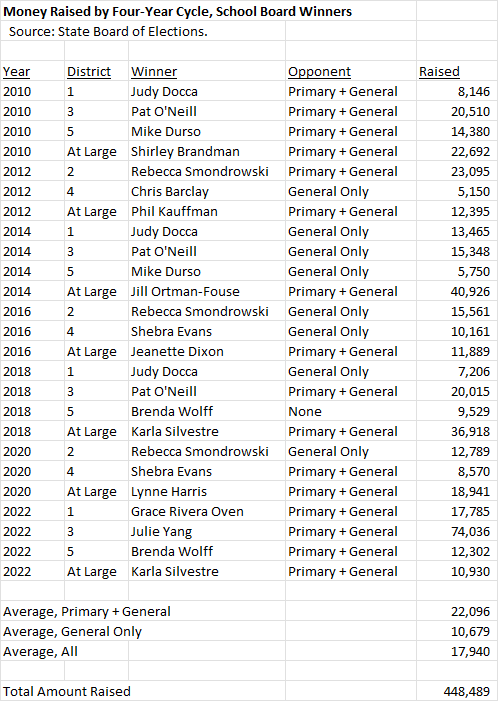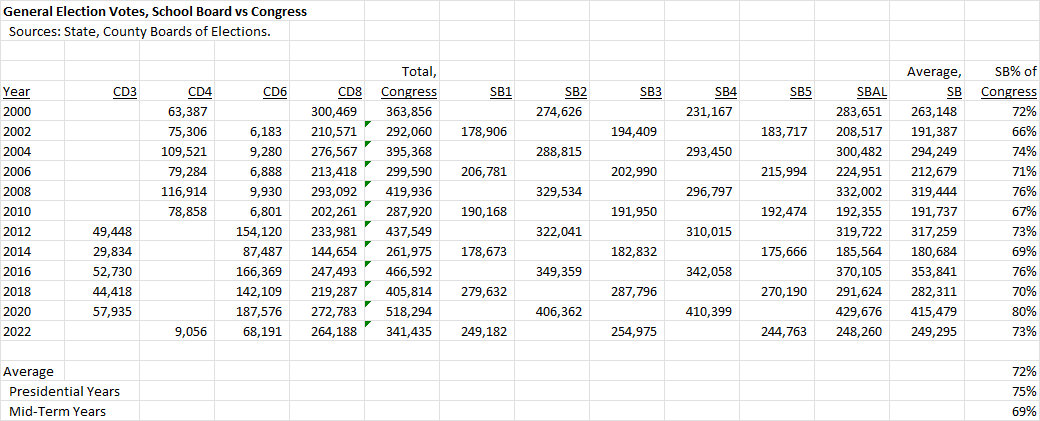By Adam Pagnucco.
Part One introduced the premise of this series: a long string of local controversies is creating an opening for national conservative groups to play in our school board elections should they choose to do so. And if they do, it will cause an all-out war for the schools not seen in our county since the 1980s.
Could it actually happen?
In considering the prospects of a war for MCPS, it’s important to understand how school board elections work. Here are seven key characteristics.
School board races are non-partisan.
Party registration of candidates for school board is not listed on ballots as shown in the 2022 general election ballot proof below. Parties in MoCo do not currently endorse school board candidates though state Republicans have shown some interest in playing. In Virginia, party endorsements for school board are more common.

Primary elections and general elections both matter.
In MoCo’s partisan elections for state legislature, county executive and county council, general elections are largely a formality as the GOP has not won one of these seats here since 2002. However, because school board races are non-partisan, general elections matter. And they have MANY more voters than partisan primaries, especially in presidential election years.
Seats are staggered.
Unlike the county council and state legislature, the entire school board is not up for election in the same year. In presidential years, seats in Districts 2 and 4 and at-large are contested. In mid-term years, seats in Districts 1, 3, 5 and at-large are contested. The student member seat is elected annually by MCPS students. So anyone looking to run the table at the school board must do it across two elections, not just one.
Everyone votes for all candidates.
Five of the seven adult seats are based in districts, but all residents vote for all candidates. This is different from General Assembly and council districts in which only district residents may vote for district candidates. This has a further effect of expanding the voter universe in these races.
Candidates have very little money to reach out to very large electorates.
Because presidential elections and general elections are both relevant in school board races and all voters vote for all seats, these candidates must communicate with many more voters than those in partisan races. And they have a lot less money with which to do that. The table below shows the amounts raised by school board winners since 2010.

The average for the period was $17,940. Subtract Julie Yang (who raised big money for a school board candidate last year) and the average falls to $15,602. This is paltry money indeed and these candidates struggle to produce even one postcard for a large voter universe.
Undervoting is common.
Lots of voters skip school board races. The table below compares voting for Congress and voting for school board in general elections since 2000.

Over the past two decades, anywhere from a fifth to a third of voters have voted for Congress but not school board. This is a sign that many people do not pay attention to these races.
Three factors have been historically important for winning: incumbency, the Post endorsement and the Apple Ballot.
These are the traditional keys to winning and I quantified them in 2020. Candidates who possess at least two of these advantages win roughly 90% of the time.
Some of these factors create opportunities for outside groups and some create problems. On the one hand, the large size of the electorate imposes significant funding requirements and right-wing outsiders are unlikely to win support from either the Post or the teachers. On the other hand, the role of Republicans and unaffiliated voters, the fact that many voters don’t pay attention and the absence of home-grown campaign fundraising are all advantages for outsiders. Throw on top of this that MCPS has had to deal with controversy after controversy – some self-inflicted – and there is enough here for a well-funded outside group to work with.
If you still don’t believe me, I will begin laying out exactly how a smart outside group could plan, launch and win a successful campaign for school board seats in Part Three. Don’t miss it!
